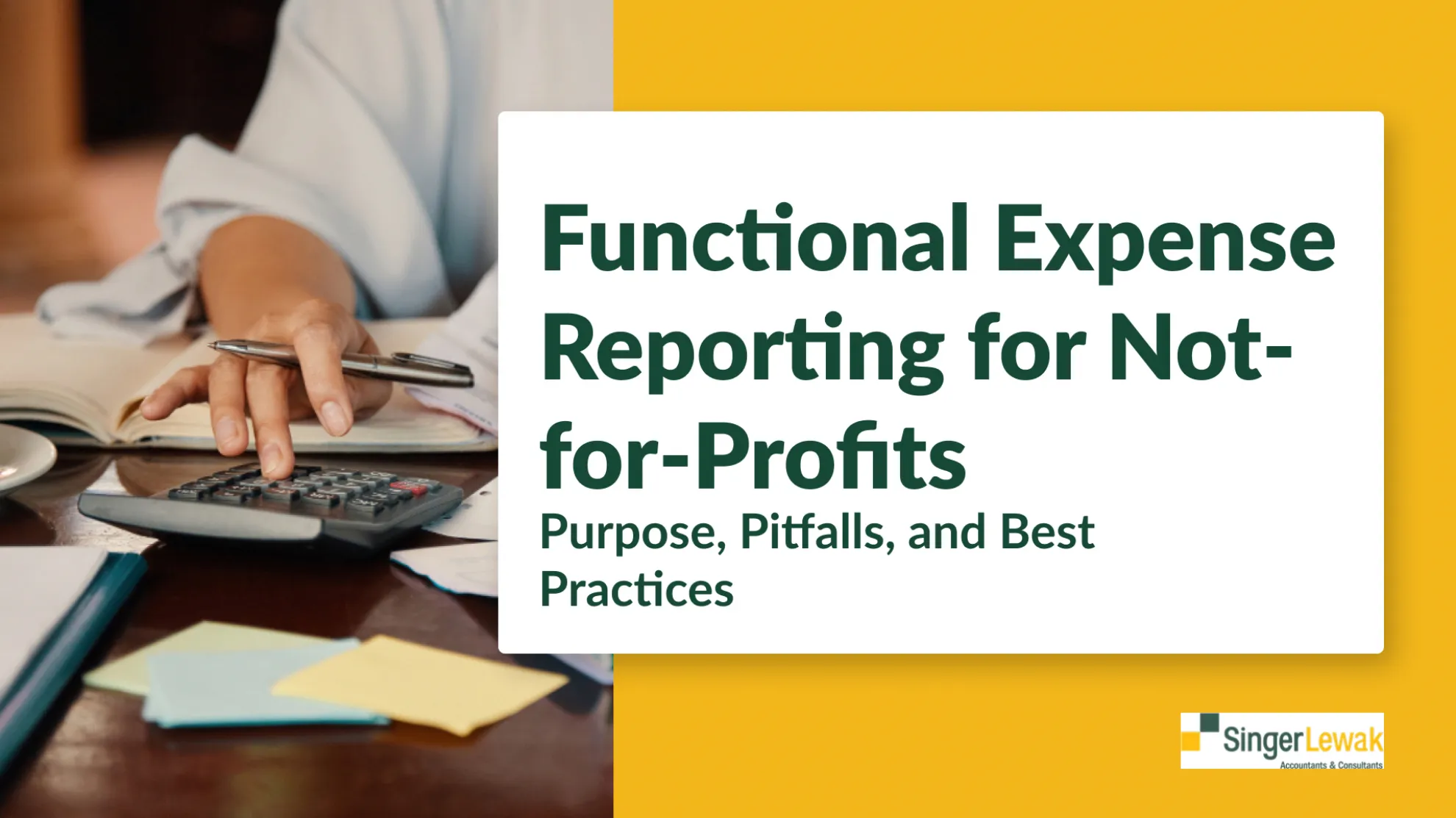FASB ASC 958-720-45-15 requires all not-for-profit’s to report information about all expenses in one location on the face of the statement of activities, as a schedule in the notes to financial statements, or in a separate financial statement, presenting the relationship between functional classification and natural classification for all expenses in an analysis that disaggregates functional expense classifications, such as major classes of program services and supporting activities, by their natural expense classifications, such as salaries, rent, electricity, supplies, interest expense, depreciation, awards and grants to others, and professional fees.
In addition to natural classifications, expenses must also be allocated across three primary functional categories:
- Program Services: Costs directly associated with fulfilling the organization’s mission.
- Management and General: Includes oversight; business management; general record keeping and payroll; budgeting; financing; soliciting funds other than contributions and membership dues; administering government, foundation, and similar customer-sponsored contracts, including billing and collecting fees and grant and contract financial reporting; disseminating information to inform the public of the not-for-profit’s stewardship of contributed funds; producing and disseminating the annual report; employee benefits management and oversight (human resources); and all other management and administration except for direct conduct of program services, fund-raising activities, or membership-development activities.
- Fundraising: Activities undertaken to induce potential donors to contribute money, securities, services, materials, facilities, other assets, or time.
Why It Matters
- Compliance: Required by IRS Form 990 and U.S. GAAP.
- Transparency: Shows how funds are used to fulfill the mission.
- Efficiency Assessment: Helps donors evaluate operational effectiveness.
- Board Member and Management: Useful for oversight and strategic decision-making.
- Grant Reporting: Often required by funders.
Common Errors in Functional Expense Reporting
- Lack of Expense Allocation Methodology
Failing to use a consistent, documented method for allocating shared costs (e.g., rent, utilities) across functions. Make sure you have a documented reasonable methodology that is justifiable and consistent.
- Misclassification of Management and General Expenses
U.S. GAAP requires that certain costs be solely allocated to management and general expenses because they benefit the organization as a whole. Examples of these costs include accounting, human resources, and payroll.
- Not Allocating Costs to Program Services
There are often scenarios where organizations are not allocating enough expenses to program services. Job duties may change, or employees may spend time on activities outside of their job descriptions. For example, human resources employees may be involved in a programmatic initiative of the organization; in that case, some of their wages and salaries can certainly be allocated to program services.
- Omitting Fundraising or Membership Development Costs
If your organization has contributions and volunteers, there likely are salaries associated with generating those contributions, yet so many times the salaries expense allocated to fundraising is inadequate or unreasonable. If employees are meeting with potential and existing donors, there should be some time allocated to fundraising.
- Level of Detail of Natural Expenses
There is no requirement in regard to the level of detail you present for the natural expenses in the functional expense analysis. Many times, organizations use 15 or more categories to disaggregate natural expenses when that level of detail isn’t meaningful to the users of the statements. Think about your audience and what will be useful to them from a materiality standpoint when disaggregating expenses. Sometimes less detail is better.
Best Practices for Preparing the Statement
- Establish Clear Allocation Policies
Use rational bases like:
- Time tracking for salaries
- Square footage for occupancy
- Usage metrics for IT or supplies
- Document Everything
Maintain records of allocation methods, time logs, and rationale for classification decisions.
- Train Staff
Educate program managers and finance teams on how their activities impact financial reporting.
- Review and Validate Regularly
Conduct quarterly reviews to ensure allocations remain accurate and relevant.
- Use Technology
Leverage nonprofit accounting software to automate and standardize reporting.
Final Thoughts
The Statement of Functional Expenses is more than a compliance requirement—it’s a strategic tool for transparency, accountability, and donor trust. By avoiding common pitfalls and following best practices, not-for-profits can ensure their financial reporting reflects their mission-driven work accurately and effectively.



